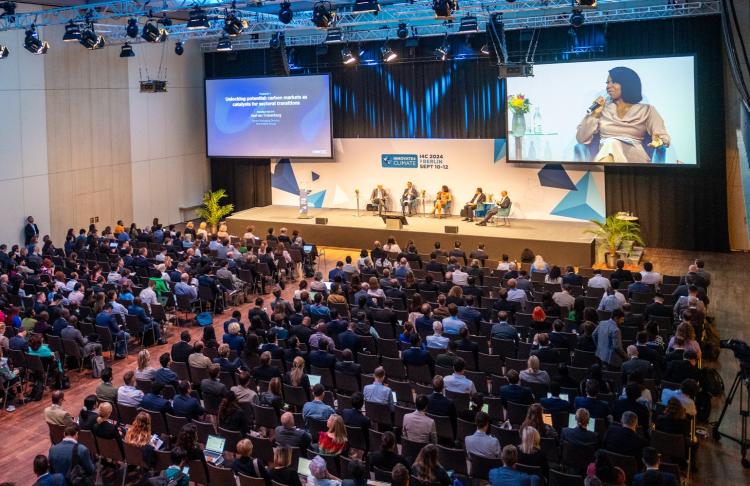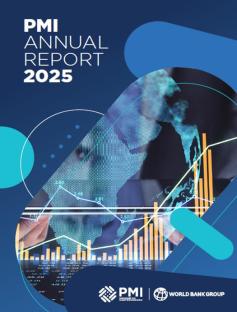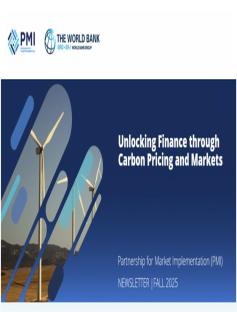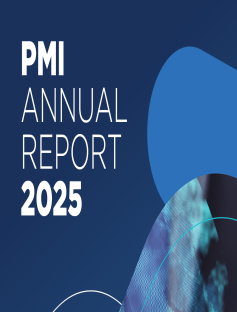As I head to Baku as part of the World Bank delegation to COP29, I’m reflecting on a bustling conference season with Innovate4Climate (I4C) 2024, UNGA and NY Climate Week, and the World Bank-IMF Annual Meetings. What stands out is the heightened ambition to scale up carbon pricing for cost-efficient emission reductions and carbon markets to unlock climate finance.
This year, the World Bank’s flagship Innovate4Climate conference, held from September 10-12 at the Estrel Congress Center in Berlin, Germany, centered on climate finance, carbon pricing, and carbon markets. In partnership with the International Emissions Trading Association (IETA) and the International Carbon Action Partnership (ICAP), with support from the Partnership for Market Implementation (PMI) and contributions from the governments of Germany and Spain, I4C gathered over 650 attendees from more than 70 countries, including government officials, private sector leaders, NGOs, and youth delegates. Across 40 sessions, topics spanned from the legal nature of carbon credits and the future of REDD+ to carbon pricing in the maritime sector and CBAM’s role in driving innovation. Diverse stakeholders shared candid insights, innovations, and solutions to scale carbon pricing and markets.
I4C was framed by two major events. On the eve of I4C, the World Bank’s Senior Managing Director, Axel von Trotsenburg, hosted a Carbon Markets Stakeholder Roundtable, convening leaders to identify shared priorities and address issues hampering carbon market growth. By the end of the week, I4C concluded with a workshop engaging representatives from 15 sub-Saharan African countries to discuss carbon market policies, with the goal of unlocking carbon finance from a large-scale energy access operation.
Key Takeaways from I4C 2024:
Carbon Pricing and Carbon Markets Play Complementary Roles
Tackling climate change requires a full toolkit to send the right price signals and incentives for climate investment. Carbon pricing drives cost-efficient emissions reductions and can induce behavioral and investment changes that reduce emissions: for example, a carbon tax, like the one in Chile, encourages a shift from gas-fueled cars to electric vehicles. An Emissions Trading System, such as in the Republic of Korea, incentivizes industry-wide emission cuts. High-integrity carbon markets, meanwhile, can be a source of international climate finance to accelerate the transition in emerging markets and developing economies. They can channel finance for impactful projects like forest restoration in Latin America and energy access in sub-Saharan Africa. As countries balance their needs for climate finance and achieving emission reductions, it’s critical they have access to the analysis and tools to implement an integrated approach to navigating choices and understanding linkages between domestic carbon pricing instruments, Article 6 markets, and voluntary carbon markets. Stay tuned to a forthcoming country guidance note that we’re about to launch to help countries navigate these decisions.
It’s the Political Economy, Stupid! But there are Solutions.
Carbon pricing faces political economy challenges, linked to perceived increase in production and consumption costs. But these are surmountable if carbon pricing policies are designed prudently. Effective communication, stakeholder engagement, using carbon revenues to support vulnerable communities and green projects, and deploying multiple instruments to maximize efficiency, can address concerns. This year’s I4C reports—Balancing Act: Political Economy Of Carbon Pricing in Developing Countries and Carbon Pricing in the Power Sector—offer insights on these issues and more.
Resilience in Carbon Credit Markets Amidst Challenges
Despite setbacks, the carbon credit market ecosystem continues to come together to create robust, high-integrity carbon markets and there are positive signs. The State and Trends of International Carbon Markets 2024 report, which we launched at I4C, shows “flight to quality”, with buyers valuing credits with development co-benefits and rated credits commanding a premium. Momentum continues in Article 6 markets; this year saw a rise in Article 6.2 bilateral agreements, and there’s optimism regarding progress on Article 6.4 here in Baku. In voluntary markets, there’s consensus that clarity on the use case for corporates is a must, with sensible approaches on utilizing credits to mitigate Scope 3 emissions starting to develop.
Since we launched our Carbon Market Engagement Roadmap last COP, and at a time when carbon credit markets are fragile, we’ve doubled down to work with other multilateral institutions and the broader ecosystem to “make carbon markets work” as a channel for climate finance. This is a testament to our belief that we can’t leave a stone unturned and need to tap into all resources, especially non-debt resources to maximize finance flows towards climate action.
Inclusive Climate Action
The Young Climate Innovators (YCI) Workshop at I4C brought together over 30 young professionals and students to share ideas on climate innovation and policy. Through peer-to-peer learning and intergenerational dialogue, the YCI delegates underscored the essential role of youth in climate action, implementing solutions across finance, technology, and policy. Similarly, the voice of Indigenous Peoples is critical, especially in carbon markets where benefits must be shared equitably. I4C saw a number of workshops focused on social integrity, and fair benefit-sharing plans. Youth and indigenous peoples perspectives are vital to end poverty on a livable planet.
Looking Ahead: I4C 2025 in Spain We’re excited to announce that Innovate4Climate 2025 will take place in Spain. While the exact city is yet to be confirmed, we look forward to reconvening the global climate community next year. Stay tuned for more details, and see you in Spain!
In the meantime, we’re eagerly following how the issues above evolve over the coming two weeks in Baku. Stay tuned for several reports we’ll be launching in the next few days on country approaches to low-carbon development, carbon market infrastructure, and country guidance to navigating carbon market decisions.
At the heart of the World Bank’s approach to the carbon pricing and carbon markets agenda is partnership via convening partners to identify and address bottlenecks and sharing knowledge and lessons learned. Effective partnerships will be crucial for implementing Paris-aligned carbon markets, with the Partnership for Market Implementation playing a vital role. For a recap of the event, watch the I4C 2024 Highlights video.
For a recap of the event, watch the I4C 2024 Highlights video.
You can also catch my interview on I4C 2024’s key takeaways.




